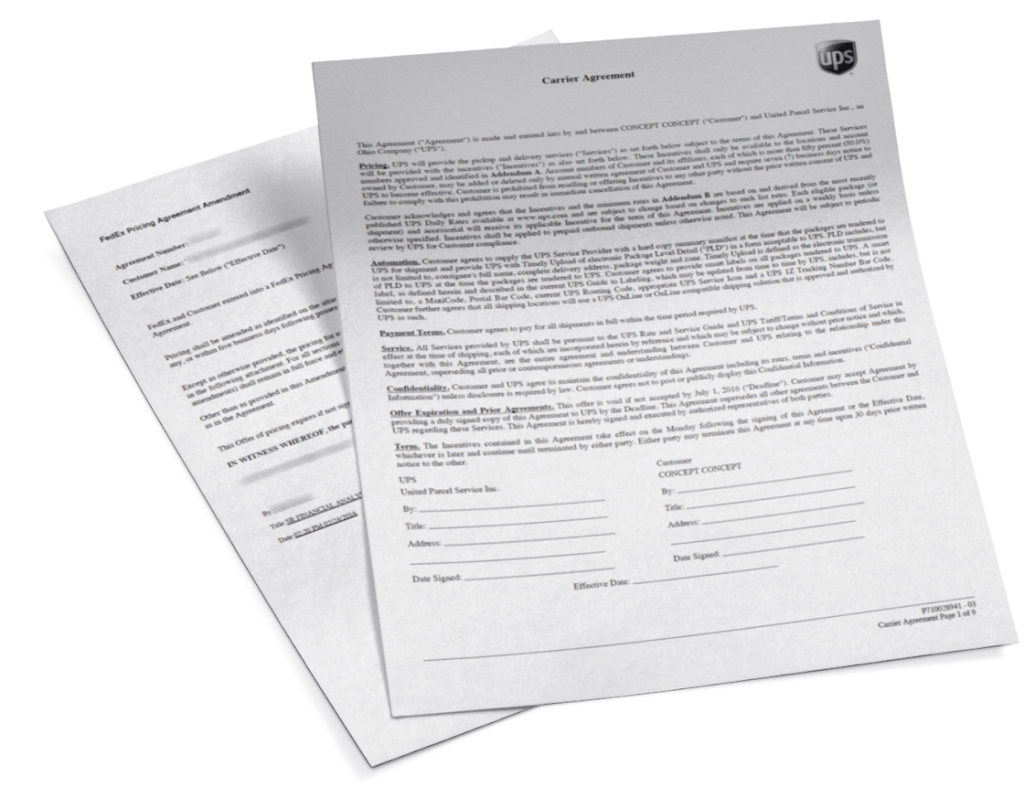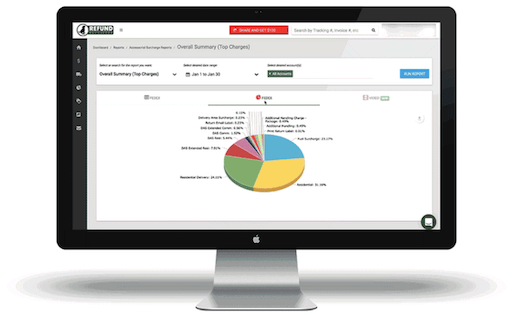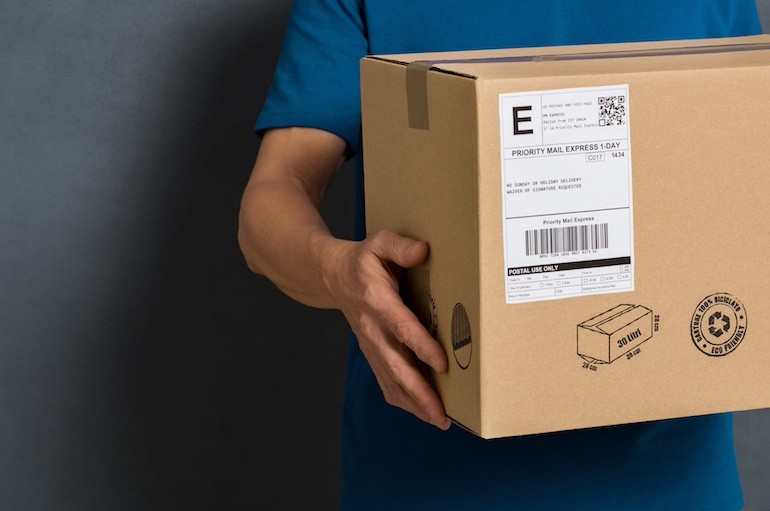This post was written and contributed by Brian Gibbs of Refund Retriever
FedEx and UPS are currently the only two parcel carriers servicing the whole United States with time-definite deliveries. Both carriers offer the same type of services and compete for the same clients on a daily basis.

Knowledge is power, and this is especially true when it comes to carrier contract negotiation.
Package characteristics are the most important thing to understand in the parcel negotiation process. Carriers analyze your historical shipping data and overall profile to determine what discounts to offer.
So when was the last time you took a look at your UPS or FedEx agreement? How can you approach a UPS or FedEx shipper agreement negotiation with confidence? Let’s discuss some basic strategy.
Step 1: Establishing your current volumes and costs
Carrier representatives have a full arsenal of reports and data with how much you ship each year and where the shipping dollars are applied.
The first step I recommend to any shipper is to establish your baseline. Figure out where your money is actually going.
In particular, these are the basic data points you should know:
- Yearly shipping volume: total spend with each carrier and individual service level
- Surcharge (accessorial) fee volume and total spend
- Dimensional weight: package count and contracted divisor
- Zone and weight distribution
Step 2: Understanding the general structure of a carrier contract agreement
Have you ever tried to breakdown the cost of your shipments? There are many different charges associated with each package you send.
Each package starts with a certain weight, dimension size, and to/from location. These characteristics establish the price of the package based on the carriers daily publish rates.
Then depending on your agreement, there will be two types of possible discounts on this published daily rate.
The first is a guaranteed discount on each service and weight. Guaranteed discounts apply regardless of your shipping volume, these discounts are a set percentage off of the published daily rates.
The next set of discounts is not a guarantee reduction in cost. Tier incentive discounts are an additional percentage off the published daily rates based on your shipping volume.
Theoretically, the more you ship the greater the incentive discounts should be. These discounts are in addition to the guaranteed discount incentives mentioned above.
On top of the published daily rates, FedEx and UPS will then apply various accessorial fee surcharges based on the package characteristics and options chosen.
This could include fuel surcharge, additional handling, residential delivery, signature requirements, and many more. Each of these accessorial fees are listed in the carrier service guides and can have discounts applied as well.
Step 3: Benchmark your rates – Data
Benchmarking your discount rates with similar-sized shippers is a crucial step in parcel negotiation that most shippers do not have easy access to.
Carriers do not have a set discount level that you can cross-reference your shipping spend and discount rates.
This would be great, but when you are dealing with representatives with salaries based on margins, the carrier representatives are always trying to make more money from each account.

To help identify where your discounts should be, find a logistics company to help, or implement outside data.
A simple Google search will find you sample contracts all over the internet. There are also seller and online chat groups that can be a good source of information.
Or you can hire a logistics auditing company like Refund Retriever. We provide volume level discount rate benchmarking for all our clients as a free service.
Step 4: Provide carrier with written request of pricing
All shippers should approach a new agreement with a clear and precise set of goals.
Always present your carrier rep with a written set of discount rates that you are trying to achieve for each service. For every accessorial fee reduction you want, put it on paper.
This allows you to set the stage from the start. Everyone already knows the published rates, so make the first move with your request for reduction.
One example is the minimum net charge that FedEx and UPS both apply.
To quickly summarize, no matter how large your discounts are, each carrier will apply those discounts up to a certain point, and then no further. Think of it as a basement floor for discounts.
You may have the best contract on paper, but when applied to your shipments it could turn out to not be such a good deal. Then you’ll never realize all the discounts you fought so hard to achieve.
There is much more on discounts, or lack of realized discounts, that I don’t have space to cover here. Head over to the Refund Retriever blog to read more, if you are interested.
Carrier Contract Negotiation Final Thoughts
In addition, the carriers will often want a shipper to waive the right to the “on-time or it’s free” guarantee. Never do this.
Not only does it lessen your available options when errors occur with your shipping, but it also reduces the amount of reporting available.
Refund Retriever offers free reports and analytics to all our auditing clients. If there is no possibility of late delivery refunds, the only other source for external reporting will be a monthly service that will cost your company even more.
A carrier contract negotiation is not something that can be accomplished in one afternoon. Once you have all the necessary data compiled, the numbers should highlight your pain points.
Take your time and quantify any proposal that is presented to you. Shipping costs can easily turn from a liability to a competitive advantage with a little work.
About the Author:

Brian Gibbs founded Refund Retriever in 2006 while running his first eBay based business and seeing the shortcomings of other shipment auditing companies. Refund Retriever’s primary focus is FedEx and UPS parcel invoice auditing. After graduating from Texas A&M University in 2001, he then graduated from the University of Houston in 2004 with a JD and MBA. Gibbs has been featured in Forbes, Entrepreneur and other publications discussing parcel auditing, shipping, eCommerce and more. Learn more at www.refundretriever.com or call (800) 441-8085 for more information.






